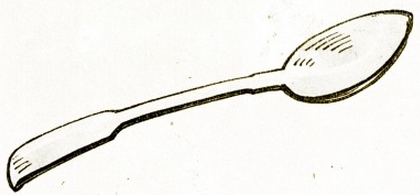 This post is part of a series of posts on cognition that can be found here.
This post is part of a series of posts on cognition that can be found here.
By the time you finish reading this post you will have greatly expanded your ability to remember a whole bunch of items. This is interactive so get ready!
You will need: a piece of paper and a pen.
This exercised can be used with students and I’ve included a printable PDF below for instant use in class. Just ask students to fold along the lines (to make a kind of pamphlet so they only see 1 list at a time) and to not look at the list fore each round before you start the timer!
Round 1:
Open this online 1 minute stopwatch (or use your own) in another tab, start it going and remember as many of the following words as you can within 1 minute. When the time runs out, write down as many of the objects as you can (the timer makes a sound when time’s up).
Now, your working memory (article to come) only has about 7 “slots”, ie: you should be able to hold only about 7 discrete things in your mind at any one time. If you got more than 7 items from the above list you’re doing a great job.
So how are we supposed to remember all 15 things on the list? There are many memory techniques that can help you do this. One branch of memory techniques is called mnemonics, and one type of mnemonic is The Link Method.
The Link Method is when you link objects together with stories, images, anecdotes or the like. Links can be as creative as you like but the main point is to try to use visuals and imagery.
Round 2:
So let’s try it! Below is a <1 minute recording of me (if you can’t see it there, view this post in your browser) using the link method to link another list of 15 random items together in a way that will hopefully help you improve upon your round 1 score! Listen to the recording and visualise the situation as I describe it (easiest if you close your eyes). When the recording is over, immediately try to write down all 15 items. (if you’re reading this somewhere where you can’t use sound you can read the story at the very bottom of this post. But ideally you’ll just listen and visualise).
How did you go? I will note that taking someone else’s mnemonic is never going to work that well, the real value is in the thinking process that you yourself engage in to make the mnemonic. By making a mnemonic yourself the links references you use will be relevant to you. Furthermore, if I was to make a mnemonic for myself for the above it probably wouldn’t be associated with that many words, it would be more in the form of pictures, shapes and objects morphing and interacting in strange ways. Unfortunately I couldn’t adequately describe this in a 1 minute recording so had to go with the more conventional “story” in the above.
As such, the mnemonic above isn’t ideal for you to remember the round 2 list, so I don’t expect your results from round 2 to be revolutionary. I do hope they were a slight improvement on round 1. Now, for round 3, try to use the link method to link this new list of objects together! This is the test!
Round 3:
Here’s that timer again. Now it’s your turn. You have 1 minute to use the link method to make up your own creative way of linking the following 15 items together, again, when the timer goes, test yourself and see how you went!
How many did you get?
Surprise! Round 4:
The real value of memory techniques isn’t always immediately obvious. And making mnemonics is a skill that needs practice so perhaps you didn’t do as well in round 3 as you might be able to if you practiced some more. But hopefully this exercise will show that the mnemonics actually stuck the objects from rounds 2 and 3 in your head much better than just holding things in your working memory.
For this round, get out a fresh piece of paper. Draw three columns, label them round 1, round 2 and round 3 and get going writing down as many of the objects as you can from each round. Take as long as you like and let us know in the comments below how many you can remember from each round!
Conclusion
The Link Method is a powerful mnemonic technique for remembering very large lists of things but it has one main weakness, the chain is only as strong as its weakest link! You may have noticed that with the above mnemonics, if you forgot one of the links* it was hard to recover from there and you might miss several items before you made it back to your list. In some extreme cases maybe you couldn’t remember the first item and then you were stuffed!** This is because the memory anchor*** to which you affixed the item was another item that wasn’t lodged very well in your brain in the first place. The next article in this series, Memory 201.2: Mnemonics-Method of Loci will introduce a way to get around this ‘weakest link’ problem in the link method.
If you liked this post you can sign up for all of my posts on learning, teaching and living to be delivered straight to your email inbox (absolute maximum of 1 email per week. Don’t worry, I hate spam too!)
*eg: the link between cookie and nail wasn’t particularly strong in the mnemonic that I made, so perhaps you were left thinking… what comes after cookie?
**this is why I included a pic of the first item for each round ; )
***a memory anchor is something you already know that you can attach new knowledge to.(article to come!)
Here’s the story from round 2:


